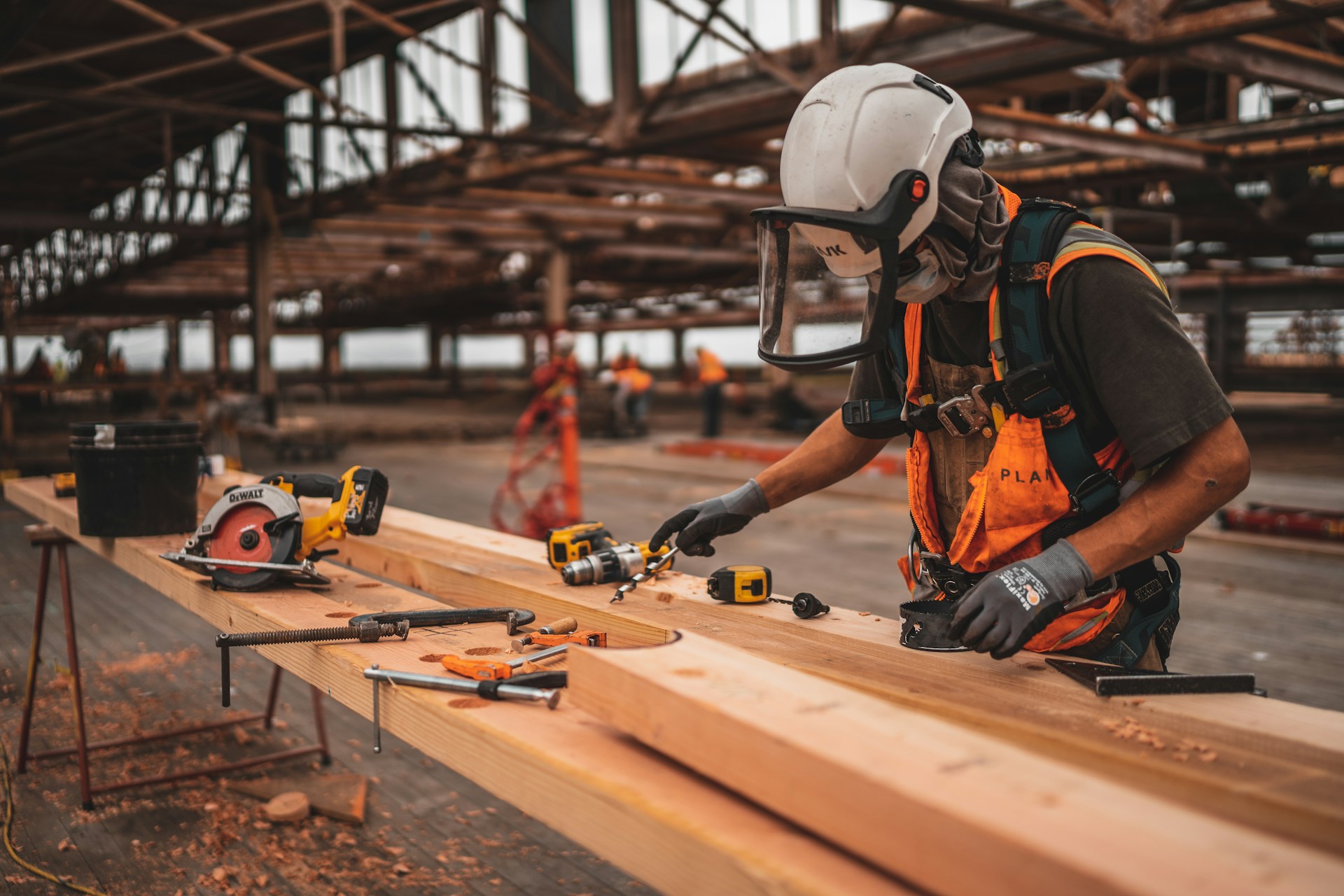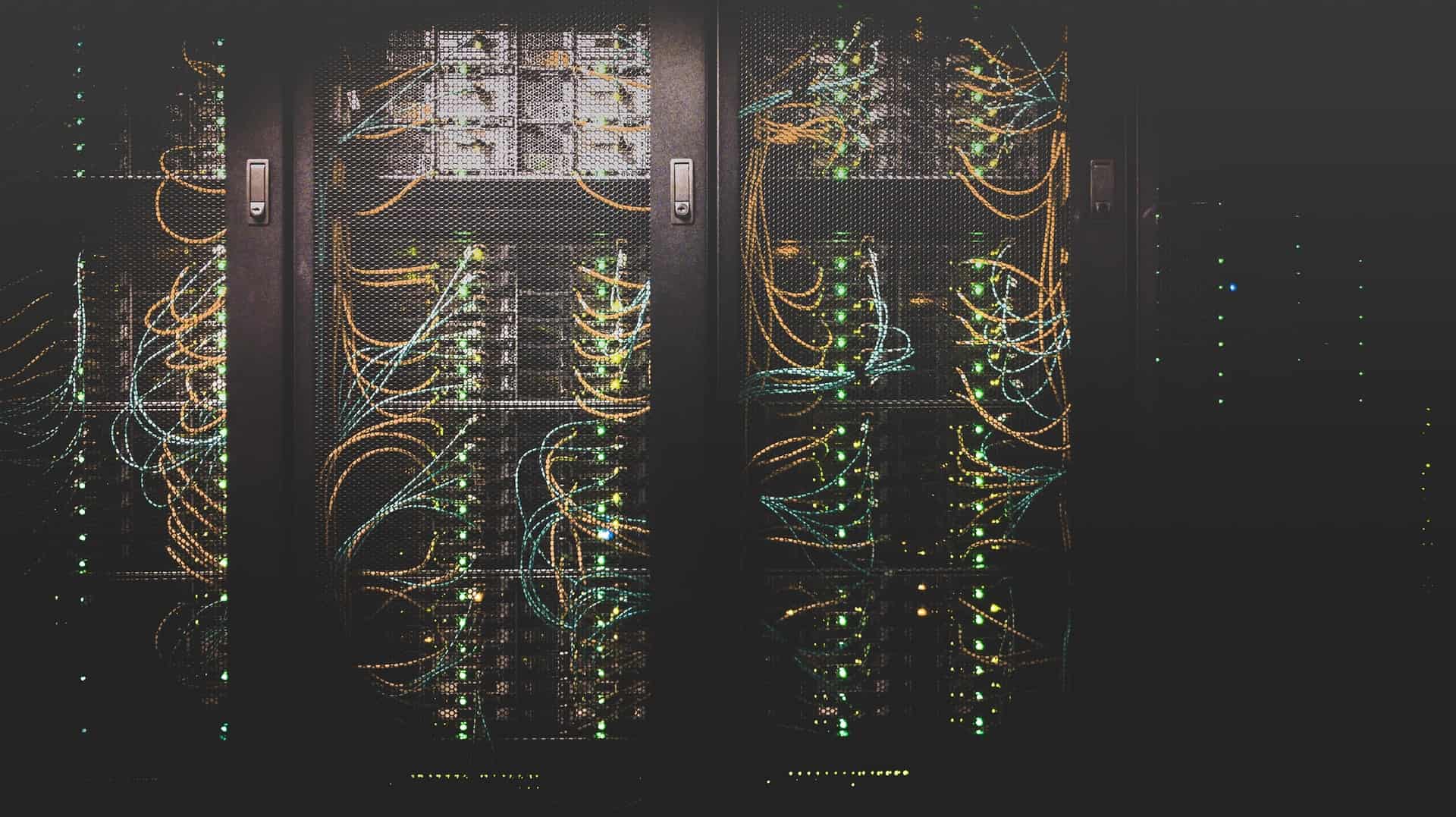
Top 16 Trends in the Construction Industry for 2025
December 31, 2024 - Emily Newton
Revolutionized is reader-supported. When you buy through links on our site, we may earn an affiliate commission. Learn more here.
Staying abreast of the trends in construction industry discussions can help decision-makers more effectively respond to changes and limit the associated disruptions of major shifts. Keeping informed of what’s new is also an excellent way to maintain competitiveness in an ever-challenging industry.
Many innovations in the construction industry require people to go outside their comfort zones and use new technologies and tools. Doing things differently often causes anxiety in the beginning. However, when business leaders know their peers have gotten great results with updated methods, they’ll be more open to following suit. Here are some of the most prominent construction industry trends that will shape 2025.
1. Continued Labor Shortage
Anyone reading about trends in construction industry publications knows they’ll often come across content detailing the difficulties of the continued labor shortage. It is a multifaceted issue.
Many construction industry professionals are near retirement or have already left the workforce. It takes significant time for the necessary knowledge transfer to occur between industry veterans and younger new hires. A related problem is that many people who have entered the workforce relatively recently don’t consider construction a viable option.
On a positive note, the construction industry’s labor shortage is improving, but there are still gaps to fill. An October 2024 analysis showed the industry had 249,000 empty positions as of the month’s last day. Analysts also put that statistic into context by confirming that the number had fallen by almost 40% from 2023’s numbers. That shows things are moving in the right direction, but anyone involved with hiring, recruiting or retaining construction industry professionals cannot become complacent in 2025 and beyond.
2. Increased Reliance on Women in Construction
There’s no quick fix to the labor shortage. However, one of the trends in the construction industry that’s getting attention from other news outlets is the growing evidence of women entering the sector to help fill employment-related gaps.
Recruitment campaigns targeting women have led to a more than 50% jump in females taking construction roles over the past decade or so. Many such positions don’t require a college degree. Another advantage is that the pay gap between men and women in construction is typically much smaller than in other sectors.
Many women decide it’s time for a career change and ultimately realize the construction industry could give them the new option they seek. Some companies are making changes that could affect long-term construction industry trends. For example, they’re offering parental leave and making other fundamental changes to make construction positions and providers more appealing to females looking for work.
However, construction industry decision-makers must do more to position the construction industry as an attractive and viable option for women. In May 2024, the U.S. Department of Commerce launched a voluntary pledge to increase the number of female construction workers. By signing it, companies signal their ongoing commitment to boost women’s access to jobs and training.
3. Cost of Construction Materials
As previously mentioned, the COVID-19 pandemic disrupted construction projects worldwide. However, researchers suggest the situation is making a positive turn. For example, construction prices finally dropped in June 2024, marking the first time that had happened since December 2023 However, the labor shortage, combined with supply chain difficulties, is making it challenging for construction project managers to get the resources they need to proceed smoothly.
One of the prevailing trends in construction industry analyses is the rising costs of critical materials. As people increasingly encounter sourcing difficulties, many have no choice but to pay premium prices. Some also stay tuned to tips in construction industry discussions that could cut costs.
Even though the expenses for some things have dropped, that is not the case across the board. Copper wire and cable and steel mill products have recently risen. Those particulars emphasize the need for people to keep an eye on prices as they track construction industry trends.
4. Development of New Construction Materials
Construction leaders are under increased pressure to cut construction material costs and find sustainable materials. These two trends in construction industry efforts have led to many in the sector developing new building materials that meet both of these aims. Some of them involve recycling construction and demolition (C&D) waste to create engineered wood or aggregate.
Such efforts reduce the overall quantities of construction materials ending up in landfills. They also cater to an increasing desire in modern society for people to make more-sustainable choices and reflect on how choices made now could positively or negatively impact future generations for decades.
People are also interested in how alternative construction materials could be kinder to the Earth than some of today’s most popular options. For example, individuals can harvest bamboo in only three to five years. Compare that to timber, which needs decades to grow. The faster growth period makes bamboo more sustainable.
In one recent development, researchers have created a 3D-printed concrete that captures carbon dioxide. Since so much of the world’s infrastructure contains that material and there is an ongoing need to address emissions, innovations like this one could be crucial for sustained progress.
5. Modular and Prefabricated Building
People who follow trends in construction industry building techniques often note that there’s historically a cyclical nature to what becomes popular. In other words, even if something falls out of fashion periodically, that might not be the case forever.
Such is the case with modular and prefabricated construction. Families of the early half of the 1900s heavily relied on those options to realize their homeownership dreams. They ordered home-building kits and enjoyed the convenience of all the supplies arriving ready to assemble.
Modular construction happens when most of the structure gets built offsite before being transferred to the final destination. Prefabrication is similar and involves making or assembling certain components elsewhere and attaching them to the building later. Together, these options target much of the waste and transportation-related emissions typically associated with construction. They also often allow the building process to proceed more efficiently, with fewer errors or budgetary overruns.
6. The Rise of Smart Cities
Many modern households have several smart devices in their homes. These gadgets do everything from helping people find information more quickly to enabling them to keep their homes clean and energy-efficient with less effort. It’s not surprising that innovations in construction industry companies often center on making entire cities “smarter,” too.
The popularity of modern technology makes this one of the biggest trends in the construction industry. These projects often result in destinations that are safer and let residents live better, happier lives. They also give engineers, designers and other professionals exciting opportunities to push the boundaries of what’s possible and be directly responsible for long-term progress.
When planned correctly, smart cities facilitate continual improvement. That’s because they collect real-time and historical data to optimize decision-making. The statistics could prevent traffic jams, promote eco-friendly development and more. Some of the largest smart city projects cost more than $100 billion. However, the people financing them believe they’ll facilitate long-term positive changes in construction and society at large.
7. Green Building
Eco-friendly practices encompass some of the prevailing trends in construction industry discussions. Efforts could include putting solar panels on the roofs of residential and commercial buildings. Doing so is good for the planet and often saves money. Another option is to recycle as many construction materials as possible during and after a project.
Construction company employees are also working hard to reach a net-zero emissions status by 2050. That will occur if the amount of greenhouse gas emissions produced and those removed from the atmosphere match.
There’s no single way to reach that goal. Some leaders will explore innovations in construction industry processes. Others will use bamboo and other sustainable materials more frequently. Some options are unconventional but exciting. For example, research is underway to use the mycelium fungus to make natural bricks. It will take time for such possibilities to become mainstream. However, they give hope for the future.
8. 3D Printing
3D printing has been a game-changer in the manufacturing sector. Many companies opt to print the spare parts and other essentials they need for their equipment rather than reordering them. However, 3D printing has also become one of the technology trends in construction industry methods. It reduces building time and promotes sustainability.
3D printing is also one of the top trends in construction industry circles because of how it could help tackle the housing shortage. Widespread usage of the technology could make houses more available to people unable to buy them now.
This construction method goes beyond homes. People have experimented with it to build schools and refugee shelters, finding it suitable for those more-specific needs. Some individuals caution that this way of building could have unknown consequences that become apparent after people use the structures for years. For now, though, many people are excited about the possibilities 3D printing offers.
9. Tech and Digitalization
The construction industry has not been on the cutting edge of technology. However, that’s changing in significant ways. Some site managers use drones to monitor for safety risks or check measurements. Analysts have also pointed out that the move toward connected construction will unlock new capabilities.
People no longer need paper documents that could get lost or damaged. Instead, they can pull up the required information on a cloud platform that lets them see a digital version on demand. This improvement enhances collaboration and leads to faster problem resolution. Team members can also see digital models of buildings before construction begins.
It takes time and effort for construction company leaders to figure out the best ways to embrace digital technologies in their businesses. However, one way to do that is to stay abreast of trends in construction industry improvements. Then, they can learn more about how peers achieved meaningful gains.
10. Robotics and IoT
Any thorough coverage of construction industry trends cannot overlook the influence of robotics and the Internet of Things (IoT) Both those industries affect other sectors, too. A robot called Moxie helps kids learn social skills and other vital capabilities. Many manufacturers use IoT sensors to monitor the condition of equipment.
One of the notable trends in construction industry management is to use IoT sensors and geofencing technology. Then, site leaders can ensure employees only use machines and tools at approved times and in the right places. This approach also thwarts theft attempts by alerting people when assets leave designated locations.
Many robotics applications in the sector reduce risks or assist with primarily manual tasks, such as bricklaying. Then, humans can often get the work done faster with a reduced risk of injuries. The use of construction robots is becoming more common, especially as leaders in the sector attempt real-life use cases.
For example, robots are helping to build elevators with shafts more than 300 feet high. Each one needs 942 anchor bolts during installation, and placing them is time-consuming. Robots help people get the job done faster, illustrating how these advanced machines can accelerate construction projects if used strategically.
The IoT has also become vital for reducing construction site thefts. Managers can set geofencing boundaries and receive alerts when assets leave designated areas. Besides allowing these professionals to track overall utilization, connected sensors aid law enforcement members in finding stolen equipment and reuniting it with its owners. This is one of the construction site trends that will continue for the foreseeable future since people are increasingly interested in preventing costly thefts.
11. Supply Chain Technologies
Many trends in the construction industry focus on reducing weaknesses. Doing that gives the affected individuals a stronger competitive advantage. Today’s leaders in the sector face increased pressure on the bottom line. Some pursue supply chain technologies to reduce extra expenses associated with stockouts or surplus items.
Some high-tech supply chain platforms also have forecasting features. They allow people to react to possibly detrimental construction industry trends in time. Then, the associated companies are more likely to remain stable rather than experience major ramifications. Smart sensors let people track parcel statuses and locations in real-time.
Supply chain technologies also often have features that let people cut down on or eliminate manual tasks. They might automatically send out or fill in the fields of invoices. Other options capture digital necessities, such as weigh station receipts. Then, it’s easier for people in the construction industry and elsewhere to track goods moving to their destinations.
12. Focus on the Bottom Line
The need to keep construction projects well-managed is one of the trends in construction industry priorities that will remain for the foreseeable future. It’s not enough for site managers to finish their projects on time and with no major mishaps. They also must stay mindful of the budget.
Pursuing optimization by improving cost-savings and efficiency will help people get the desired results. It’s also useful for individuals to choose metrics and set associated goals. They can then see how things change over time. The outcomes will help them determine whether things are going in the right direction or require further tweaks.
Paying attention to the bottom line gives people more flexibility, letting them respond confidently to changing circumstances. Maybe they need to temporarily pay more for material not as widely available as before. Perhaps they’ll spend significant amounts on a creative hiring campaign. Monitoring the bottom line gives leaders more freedom to spend on those necessities.
One way to improve the bottom line without sacrificing quality or performance is to consider renting construction equipment. That option is often less expensive than purchasing new, especially if people need specialized machines for short-term projects. Additionally, many construction items for rent feature the newest technologies, encouraging people to get acquainted with them and understand how they could help their businesses and efforts.
13. Building Modeling Technology
Building information modeling (BIM) involves digitizing a physical structure’s characteristics or functions to manage it more easily. Construction professionals use this digital likeness to improve logistics and financials. It can even increase communication since project managers can show clients how layouts would look instead of telling them.
The adoption of BIM is one of the more notable trends in the construction industry. The existence of shared 3D models could permanently change how companies plan and manage their projects.
More professionals will adopt these shared 3D models as the technology increases in popularity. To get an idea of how BIM usage has grown in some parts of the world, consider some takeaways about the reliance on this technology by European architects.
In 2009, only 10% of people in that group used it. However, the figure had ballooned to 45% by 2023. Construction professionals should expect more of the same in other areas, especially since architects can share BIM models with all applicable parties, keeping everyone on the same page throughout the construction process.
14. Improved Worker Safety
Work-related injuries and fatalities have long been a pain point in the construction industry. Unfortunately, the widespread labor shortage and heightened demand have made them even more common. Data collected in 2023 by the Bureau of Labor Statistics showed construction had the highest fatality rate of all industries studied that year. Additionally, the number was the highest logged in construction since 2011. Those sobering findings emphasize the need to find effective and accessible solutions to make workplaces safer.
Technology-led worker safety is one of the emerging trends in construction. To help reduce fatalities and workplace injuries, more companies will use artificial intelligence and the IoT to identify and eliminate dangers. For example, heavy-duty boots with sensors will alert site managers when someone falls. Workers will also wear high-tech helmets that vibrate and set off alarms whenever they detect hazards like high temperatures or poisonous gas.
Improved worker safety will be one of the fastest-growing construction trends. Personal protection equipment like hard hats and steel-toed boots are already part of the usual uniform, so adapting will be easy. People also appreciate feeling safe at work, making them more likely to embrace the change.
15. Living Buildings and Materials
The construction sector has a significant effect on the planet. For instance, buildings produce 33% of greenhouse gas emissions worldwide. Many companies want to improve their current impact in line with intensifying environmental regulations. Consequently, living structures will be one of the biggest emerging trends in construction.
When construction workers build a structure using live materials like bamboo, trees or bushes, the finished product is called a living building. They are quickly becoming as popular as other eco-friendly practices because they are cost-effective and have a very low environmental impact. When they take damage, they regrow instead of needing repairs. Also, they are built to withstand the local climate and severe weather.
General interest in this eco-friendly practice recently increased. In the United States, Google searches for living building materials peaked in July 2024 and had several other elevated periods during later parts of the year. The newfound curiosity will inspire companies to adapt. This could be one of the most impactful trends in the construction industry.
16. Artificial Intelligence Technologies
Artificial intelligence is one of the most highly sought-after technologies, so it makes sense it will be behind one of the fastest-growing construction trends. Experts agree its market value will increase from $241.8 billion in 2023 to $738.8 billion in 2030. The annual growth rate of over 17% is impressive but not surprising.
Project managers can monitor their sites 24/7 with algorithm-powered security cameras to prevent theft. Workers can use it to optimize their performance and schedule to reduce the physical toll their work takes. Of all the trends in the construction industry, this one might be the biggest. Artificial intelligence shows promise, so many companies are racing to adopt it.
An upside of artificial intelligence becoming so popular is that it has become much more affordable. More construction companies will be able to integrate it into their current workflows. Even though it is one of the more recent emerging trends in construction, it is one of the most notable.
How Will You Respond to These Trends in Construction Industry Priorities?
These are some of the many construction industry trends that people should stay aware of in 2025, and perhaps beyond. They’ll undoubtedly affect current construction projects and those in the pipeline for the months ahead. Some of the topics here might even inspire people to pursue their first construction jobs.
Visit Revolutionized often to get the latest news on innovations in construction industry methods and preferences. This is a fast-changing sector, but keeping pace with it is a great way to maintain knowledge and feel competent when participating in discussions about the industry or giving recommendations to peers.
Editor’s note: This article was originally published on January 10, 2019 and was updated December 31, 2024 to provide readers with more updated information.
Revolutionized is reader-supported. When you buy through links on our site, we may earn an affiliate commission. Learn more here.
Author
Emily Newton
Emily Newton is a technology and industrial journalist and the Editor in Chief of Revolutionized. She manages the sites publishing schedule, SEO optimization and content strategy. Emily enjoys writing and researching articles about how technology is changing every industry. When she isn't working, Emily enjoys playing video games or curling up with a good book.







